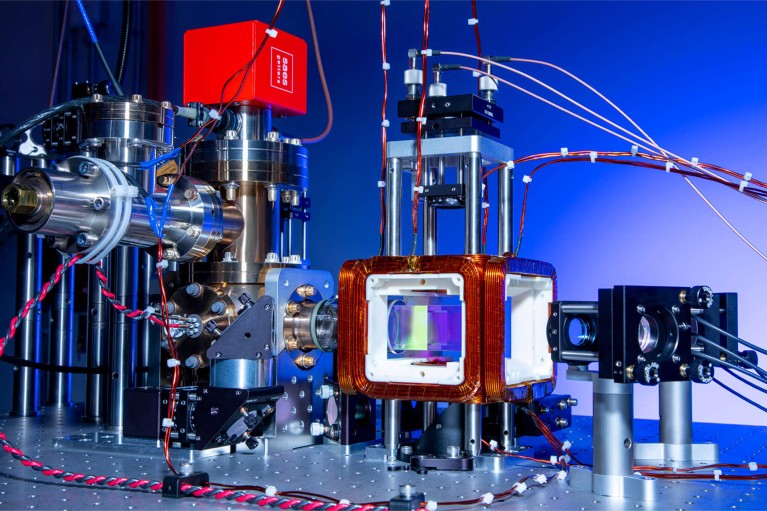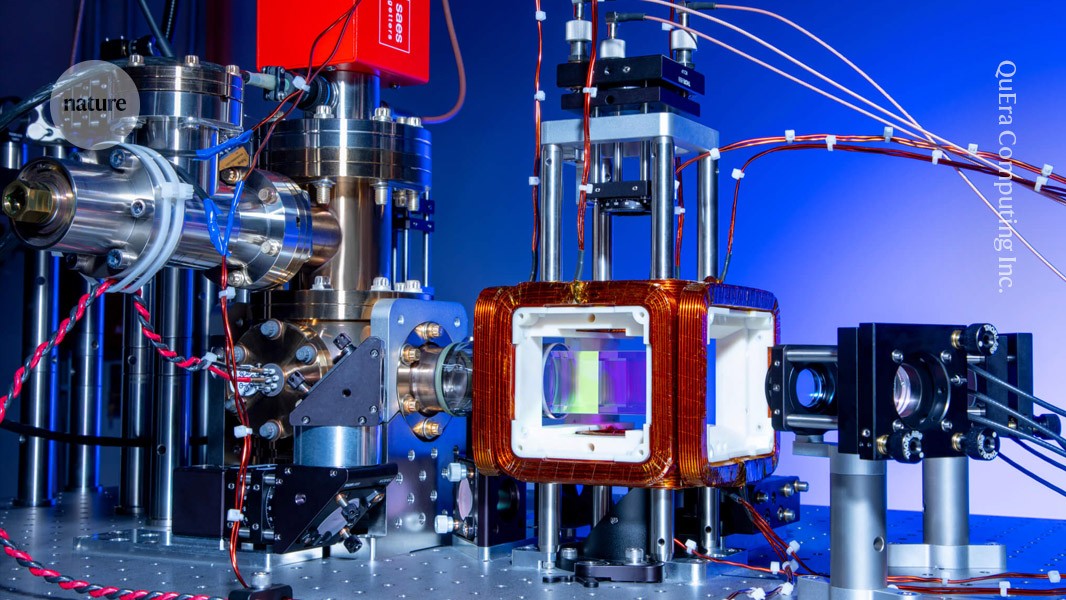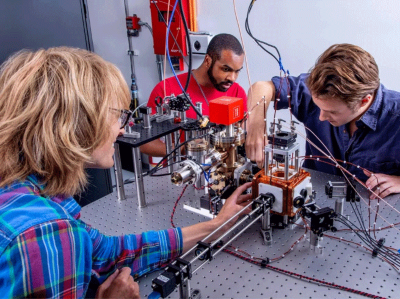
Part of QuEra’s Aquila quantum computer.Credit: QuEra Computing Inc.
Subatomic particles such as quarks can pair up when linked by ‘strings’ of force fields — and release energy when these strings are pulled to the point of breaking. Two teams of physicists have now used quantum computers to mimic this phenomenon and watch it unfold in real time.
The results, described in two Nature papers on 4 June1,2, are the latest in a series of breakthroughs towards using quantum computers for simulations that are beyond the ability of any ordinary computers.
“String breaking is a very important process that is not yet fully understood from first principles,” says Christian Bauer, a physicist at the Lawrence Berkeley National Laboratory (LBNL) in California. Physicists can calculate the final results of particle collisions that form or break strings using classical computers, but cannot fully simulate what happens in between. The success of the quantum simulations is “incredibly encouraging”, Bauer says.
String simulations
Each experiment was conducted by an international collaboration involving academic researchers and corporate teams — one at QuEra, a start-up company in Cambridge, Massachusetts1, and the other at the Google Quantum AI laboratories in Santa Barbara, California2.
The researchers using QuEra’s Aquila machine encoded information in atoms that were arranged in a 2D ‘honeycomb’ pattern, each suspended in place by an individual optical ‘tweezer’. The quantum state of each atom — a ‘qubit’ which could be excited or relaxed — represented the electric field at a point in space, explains co-author Daniel González-Cuadra, a theoretical physicist now at the Institute for Theoretical Physics in Madrid. In the other experiment, researchers encoded the 2D quantum field in the states of superconducting loops on Google’s Sycamore chip.
Quantum-computing technology that makes qubits from atoms wins mega investment
The teams also employed diametrically opposite quantum-simulation philosophies. The atoms in Aquila were arranged so that the electrostatic forces between them mimicked the behaviour of the electric field, and continuously evolved towards their own states of lower energy — an approach called analog quantum simulation. The Google machine was instead used as a ‘digital’ quantum simulator: the superconducting loops were made to follow the evolution of the quantum field ‘by hand’, through a discrete sequence of manipulations.
In both cases, the teams set up strings in the field that effectively acted like rubber bands connecting two particles. Depending on how the researchers tuned the parameters, the strings could be stiff, wobbly or break up. “In some cases, the whole string just dissolves: the particles become deconfined,” says Frank Pollmann, a physicist at the Technical University of Munich (TUM) in Garching, Germany who helped to lead the Google experiment.



